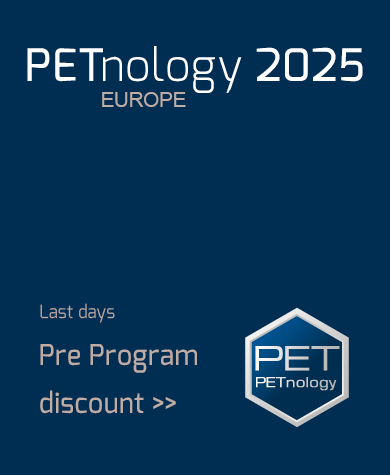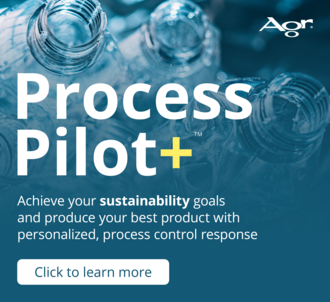For the first time, Plastic Technologies, Inc. (PTI) is making its oPTI™ lightweight foamed polyethylene terephthalate (PET) container blow molding process available for dairy applications via both stock and custom options.
The process enables up to 50% improvement in ultraviolet (UV) barrier when compared to traditional monolayer PET or HDPE dairy bottles. The first stock container is 300 ml (10-ounces) and features a tall, square profile, with a 38 mm finish. The capability targets milk, drinkable yogurts and other specialty dairy products. Ideally-suited are those with organic positioning who want package performance attributes without additives.
Launched in 2009, the technology represents a departure from traditional PET processing approaches. Marketed under the oPTI™ (pronounced opti) brand name, the process is based on MuCell® technology licensed from Trexel, Inc.
The capability will now provide dairy brand owners with a broader range of PET container aesthetics and performance capabilities than previously possible. For example, the process enables white or silvery foamed bottles to be made without additives which can limit package recycling. (White or silvery foamed bottles will mold into a transparent bottle after remelting and subsequent processing.)
Containers also have a unique surface feel and provide tactile traction which minimizes slipping. The process blow molds details more prominently which enables decorations (embossed logos, art elements) to stand out better.
Dairy applications, such as milk, specialty drinks, etc. are sensitive to UV rays which decrease shelf life. To solve the problem, additives such as titanium dioxide [TiO2], are frequently added to high-density polyethylene or traditional PET containers to achieve shelf-life objectives. In addition to impacting the recycling stream, these additives are expensive, significantly increasing packaging costs, explains Frank Semersky, vice president, chief innovation officer, PTI.
oPTI™ technology can produce bottles with up to 95% reduction in transmitted light when compared to traditional PET containers. (Approximately 50% percent without additives and up to 95% with reduced loading of TiO2.) Additionally, the foam process enables lightweighting of up to 5 percent without significant loss of performance.
In addition to white or silver options, blue and green colorants also can be used since those colors already exist in traditional PET recycling streams. The technology also is capable of producing bottles in a variety of pastel colors to support varieties (chocolate, strawberry, etc.). However, these cannot be recycled as part of the clear PET stream. Containers can be made from translucent to opaque depending on the desired aesthetics and performance characteristics.
PTI's oPTI™ bottle capability is based on using the MuCell® microcellular foam injection technology to mold preforms, which then can be blow molded on conventional equipment. The bottles are made in four basic steps:
- Nitrogen is injected into the melt through the barrel on a modified preform molding machine to form a single-phase solution of polymer and gas.
- Foam is produced as cavity-fill pressure is dropped below nucleation pressure during the injection cycle.
- Foam cells expand as gas is diffused into bubbles. Processing conditions are used to control cell growth in the finished perform.
- The preforms are then used on conventional, unmodified blow molding machines to produce the final foamed bottles.
In addition to PET, the foam bottle technology is applicable to other resins such as polylactic acid (PLA) and polyethylene naphthalate (PEN). Potential applications include a wide range of bottles and jars in food, beverage, personal care, household chemical, etc. markets.
| Pam Douglas Marketing Coordinator Phone: +1 (419)725-5620 info@plastictechnologies.com |









